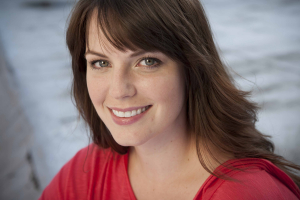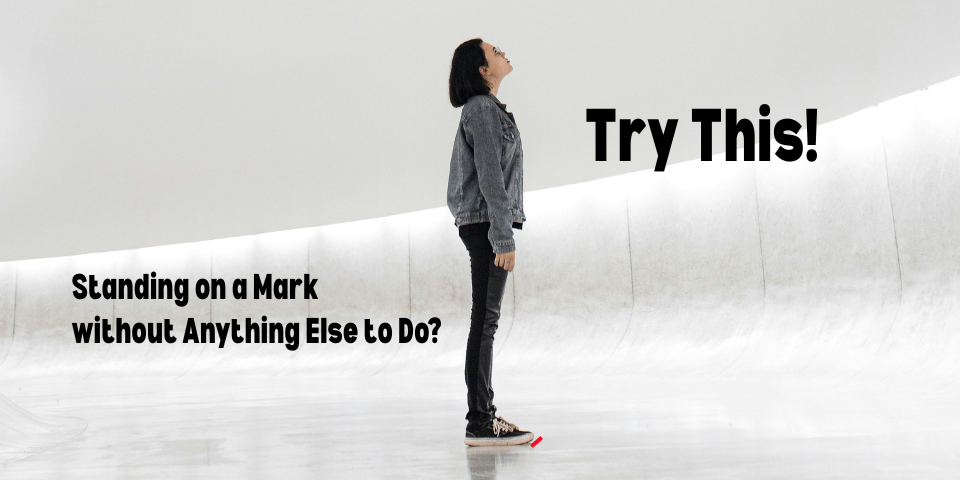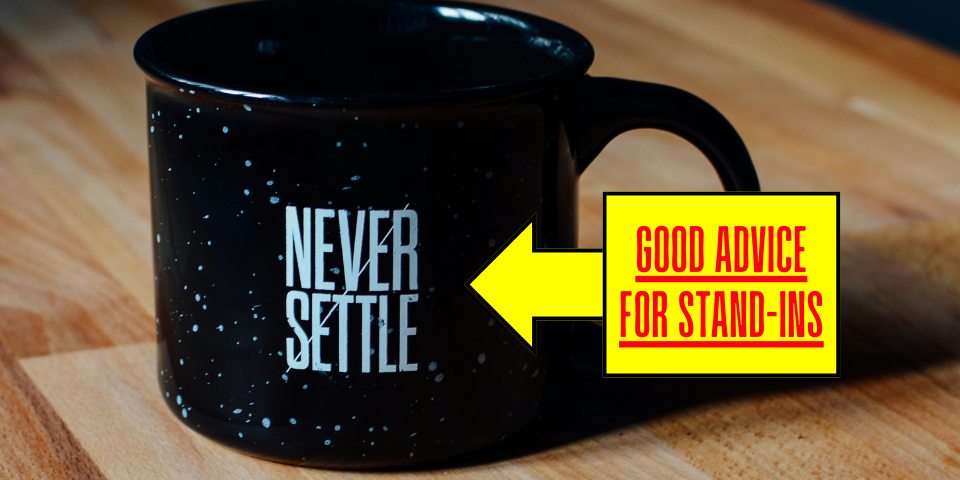I’ve stood in with actor Haley Zale for a couple seasons on Showtime’s Nurse Jackie. As a stand-in, Haley demonstrates a lot of respect for the job, and I asked her what interesting take she might have on standing in for an interview for Stand-In Central.
Haley wanted to comment on standing in for actors who are dissimilar to herself, something she has intimate experience with. Read the interview with Haley Zale below!
– The Editor
SIC: What’s your name and what do you do?
HZ: My name is Haley Zale and I work as a stand-in when I’m not auditioning for acting roles.
SIC: Who are some of the actors for whom you’ve stood in?
HZ: I have regularly stood in for Merritt Wever for Seasons 3 and 4 of Nurse Jackie. I’ve also stood in for Jill Flint on Royal Pains, Tiffani Thiessen on White Collar, and day-played for actors such as Julia Ormond, Jacqueline Laurita of The Real Housewives of New Jersey fame, Marian Seldes, Jaimie Alexander, and Eddie Shin.
SIC: Oftentimes a stand-in is similar in key ways to her first-team actor. You, however, have had experiences being quite different from your first-team actor. What are some ways you’ve been dissimilar to your first-team actor when you’ve stood in?
HZ: It hasn’t been unusual to stand in for a person that is very dissimilar to me. The most extreme case was when I stood in for Eddie Shin on Royal Pains. I was different both in gender and ethnicity.
Height, weight, hair and eye color have been different as well. The majority of my stand-in experience has been for Merritt Wever, who is 3/4 of an inch shorter than me and has lighter brown hair.
SIC: When you have stood in for a dissimilar actor, did you compensate in any way to be more similar to your first-team actor? How do you recommend compensating for differences?
HZ: When I stand in for a first-team actor who is dissimilar to me, there are certain aspects I’ve learned that I can’t control. I can’t control my ethnicity or my gender or my height or my eye color or my skin tone. But I can adjust a couple things.
If my first-team actor is taller than me, I can easily slip into a pair of high heels. I have a stand-in bag with three different pairs of shoes, varying in heel size. I have a pair of ballet flats, a pair of 1-inch heels, and a pair of 3-inch heels. I’ve found that with this collection I can switch into shoes that better match the height of my first-team actor.
However, being taller than my first-team actor has proven to be trickier. Bending my knees isn’t a feasible option. Squatting for 45 minutes as the lighting is set is a thigh workout that will exhaust me for the rest of the day. Slouching will sometimes work, although that can also be painful to the body. I will use slouching sparingly, only when the camera operators or the director of photography are looking at the shot.
My favorite trick is to take a wider stance. It’s a simple fix to shave off a half an inch or more, depending on how wide the stance. And it’s a comfortable position to sustain for a 14 hour day!
SIC: For what characteristics do you find it most important to adjust? For what characteristics do you find it less important to adjust?
HZ:I find it most important to adjust my height. I’ve found it less important to adjust my hair, although it makes me more confident when standing in for someone who looks dissimilar to me.
I can make slight suggestions with my hair by copying the style of my first-team actor. For example, when Merritt Wever’s hair is in a lower bun, I make sure my darker hair is in the same style. When her hair is in ponytail, I do the same. In order to keep my position as a stand-in, I feel that paying attention to detail and doing a good job are aspects that I can control.
SIC: Have you considered changing your everyday appearance in some way when you’ve regularly stood in for a dissimilar first-team actor?
HZ: I have considered lightening my hair to keep a 10-episode job as a stand-in. But I didn’t do it. I investigated using colored Halloween hair spray that washes out, but the yellow turned my hair greenish and looked too artificial. No one asked me to lighten my hair. It was an idea that I had based from my own insecurity.
Permanent color was not an option. Coloring my hair would result in it being different than my natural color in my own actor headshots. I wasn’t willing to re-market myself with lighter hair.
SIC: Sometimes being dissimilar to an actor can threaten a stand-in’s self-esteem on set. How would you recommend someone deal with feeling different with her first-team actor, as opposed to having her same height, same hair color, or some other identical characteristic?
HZ: Remember one thing when you’re booked for stand-in work: You’re BOOKED! There is a reason they booked you. Yes, you can easily be replaced with someone who is probably a better fit. But being smart and paying attention to the character mannerisms and stances–and most importantly, blocking–will show your professionalism and help you keep your job.
SIC: Do you let differences in appearance keep you from submitting yourself as a candidate for an actor’s stand-in on a project?
HZ: Sometimes I let differences in my appearance to an actor inhibit me from submitting as her stand-in. Usually I won’t submit for a blond actress. But if there is a posting for a brunette who’s within an inch of my height, I will submit.
SIC: Do you have any advice for a stand-in looking for regular stand-in work but for an actor she doesn’t resemble?
HZ: My advice is to try it! Being selected to stand in for someone is out of your control. But what you can control on set is your behavior. Do a good job listening for them to call “check the gate” before they ask for second team. Be easily accessible and always let someone know if you step off the stage. Doing these things will show your professionalism. If there are ways you can wear your hair to resemble your first team actor, do it! Even if it’s not a flattering look or the way you usually wear your hair. Once the DP and the director see your professionalism, they’ll invite you back to work again. And soon it can turn into a regular stand-in gig!
SIC: Anything else, Haley?
HZ: Color cover and nametags have become my two best weapons. I work on a TV show where a new director comes in every two weeks. I make sure I have a new nametag with both mine and my first-team character’s names on it for the first few days with a new director. I wear my name tag proudly!
Color cover serves as a bold statement that I am standing in for this actor. She will wear pink in this scene, so I wear pink while standing in and during second-team rehearsals. Even if the clothing that wardrobe gives me for color cover is too big, I still wear it with pride. I become associated with that color and associated with my first-team actor.
SIC: Haley, that’s a wrap on this interview!
HZ: Great! See ya!
Haley Zale lives in New York City. Her website is http://www.haleyzale.com.







Leave A Comment